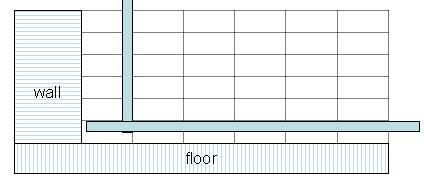Hi all,
I am planning on tiling a wall. This is a mini-DIY project using the 'How To' guides.
One question:
What if the floor/skirting board isn't totally horizontal.
I will use a baton to create a horizontal line. My understanding is that this should be the point at which my 2nd row of tiles should start. The distance between the skirting and the (top of the) baton should be the length of a tile plus 2 x spacer (bottom and top).
If the skirting isn't totally horizontal then do i have tiles of differing sizes along the top of this skirting?
Hope the question makes sense.
I am planning on tiling a wall. This is a mini-DIY project using the 'How To' guides.
One question:
What if the floor/skirting board isn't totally horizontal.
I will use a baton to create a horizontal line. My understanding is that this should be the point at which my 2nd row of tiles should start. The distance between the skirting and the (top of the) baton should be the length of a tile plus 2 x spacer (bottom and top).
If the skirting isn't totally horizontal then do i have tiles of differing sizes along the top of this skirting?
Hope the question makes sense.


